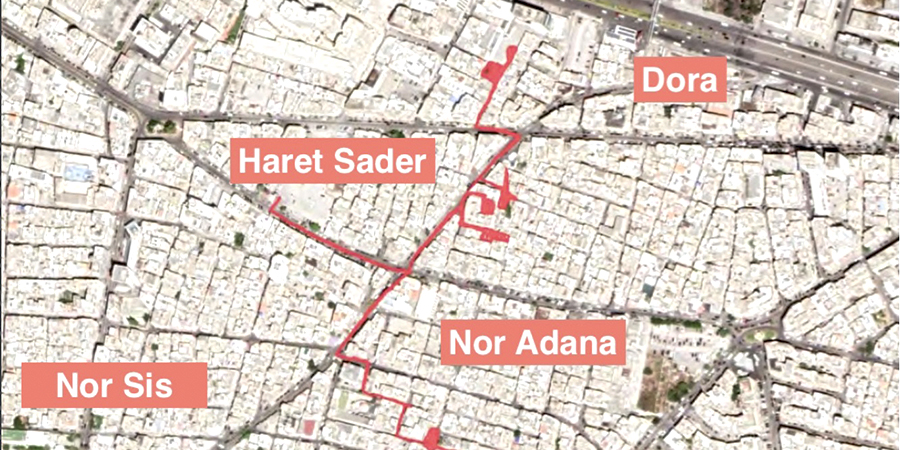- Most viewed
- Last viewed
UIC Barcelona students develop a reconstruction plan for one of the neighbourhoods affected by the explosion in Beirut’s port area
The workshop was held within the framework of the University Master's Degree in International Cooperation, Sustainable Emergency Architecture and was attended by students from four universities
On 17 April students taking the University Master's Degree in International Cooperation, Sustainable Emergency Architecture at the UIC Barcelona School of Architecture presented their recovery and reconstruction plan for the Bourj Hammoud district of Beirut, affected by the explosion in the port area of the Lebanese capital on 4 August. The students worked on their proposals within the framework of the international workshop entitled “Beirut spaces of conflict, recovery and reconstruction in post-disaster landscapes”, which took place throughout March and April, and in which students from the American University of Beirut (AMB), the Chalmers University
of Technology Sweden and RMIT University Australia also participated. The initiative also benefited from cooperation with the following NGOs: NUSANED, UNHCR and Catholic Relief Service (CRS). They have all been working in the field since last August, alongside local municipal authorities.

The students' work focused on four urban gaps in the Bourj Hammoud district, which is characteristic of its very diverse population with large groups of Armenian and Syrian refugees. The methodological approach was based on socio-spatial analysis at two intervention scales: a neighbourhood scale and an urban gap scale with the aim of identifying the social and strategic use of urban gaps. To this end, criteria such as mobility and accessibility, building conditions or potential risks were analysed. Secondly, coordinated field work was carried out with NGOs, the government and local university students to identify the needs and desires of the different social actors (children, women, senior groups, etc.) and detailed mapping was carried out. In addition, the design was outlined throughout several virtual meetings with the neighbourhood community in Bourj Hammoud, the municipality and the local NGO, ensuring they were involved in the process at different stages. The final proposal included an analysis of the implementation stages of the improvements, materials and the overall budget. These projects will continue with participation from local actors and cooperation with lecturers and master's degree students.
“This methodology based on a double spatial and social analysis allows us to identify the uses, needs and perceptions that the inhabitants themselves have of their public spaces, thus reinforcing the commitment of the local communities to the reconstruction process. The plan put forward by the students includes a series of recommendations for optimising uses and social cohesion in these spaces and concrete proposals for improvement that will be implemented in stages and that can be replicated in the urban regeneration of other areas in Beirut,” explained the master's degree director, Carmen Mendoza-Arroyo.